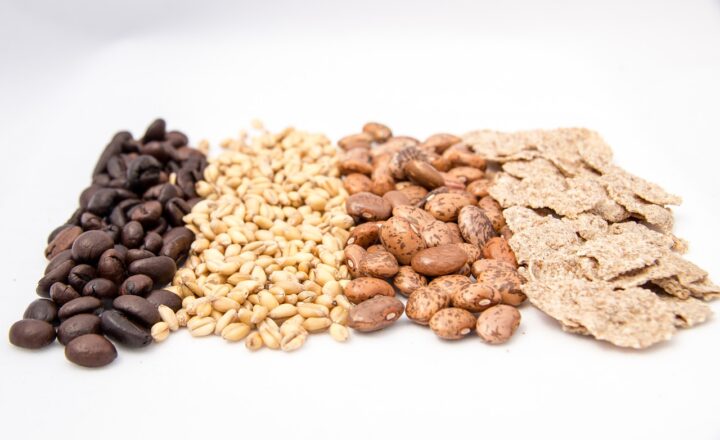Breaking Down Macros and Calories: A Beginner’s Guide to Healthy Eating
November 11, 2024

Healthy eating can often seem complicated, but it doesn’t have to be. Understanding the basics of macronutrients (macros) and calories is essential for making informed dietary choices. This guide will break down what macros and calories are, why they matter, and how you can balance them for a healthier lifestyle.
1. What are Macros?
Macros, short for macronutrients, are nutrients that provide us with energy (calories) and are essential for growth, metabolism, and other bodily functions. There are three primary macronutrients:
- Carbohydrates: Often the body’s primary source of energy, carbs break down into glucose, which feeds our cells and provides fuel for the brain, muscles, and other tissues. They can be found in grains, fruits, vegetables, and dairy products.
- Proteins: Crucial for building and repairing body tissues, proteins are made up of amino acids and are important for muscles, enzymes, and hormones. Sources include meat, fish, dairy, legumes, and nuts.
- Fats: Fats provide a concentrated source of energy, support cell growth, protect organs, and help absorb nutrients. Healthy fats can be found in avocados, nuts, seeds, and olive oil, while unhealthy fats are present in processed foods.
Understanding the role of these macronutrients will help you create a balanced diet tailored to your needs.
2. What are Calories?
Calories are a measure of energy. Every food and beverage contains a certain number of calories based on its macronutrient composition. Here are the calorie values for each macro:
- Carbohydrates: 4 calories per gram
- Proteins: 4 calories per gram
- Fats: 9 calories per gram
The total number of calories consumed daily will impact your weight. To maintain weight, you need to consume the same number of calories as you burn. To lose weight, you need to create a caloric deficit by consuming fewer calories than you expend, and conversely, to gain weight, you must consume more than you burn.
3. Why Macros and Calories Matter for Healthy Eating
Understanding your macros and calories helps you:
- Maintain a Balanced Diet: Helps ensure you’re consuming a variety of nutrients for optimal health.
- Reach Specific Goals: Whether you’re aiming for weight loss, muscle gain, or just overall health, knowing how to balance macros is critical. Different goals will require different macro ratios.
- Enhance Performance: Athletes and active individuals can benefit from monitoring macros to support performance and recovery.
4. How to Calculate Your Macros and Calories
Calculating your daily caloric needs and macro ratios might seem daunting, but it’s quite straightforward. Follow these steps:
a. Estimate Your Daily Caloric Needs
You can calculate your Total Daily Energy Expenditure (TDEE) using the following equation:
TDEE = Basal Metabolic Rate (BMR) x Activity Level
Your BMR is the number of calories your body needs to function at rest. Use this formula to find it:
– For men: BMR = 10 x weight(kg) + 6.25 x height(cm) – 5 x age(y) + 5
– For women: BMR = 10 x weight(kg) + 6.25 x height(cm) – 5 x age(y) – 161
Activity Level can be rated as follows:
– Sedentary (little or no exercise): BMR x 1.2
– Lightly active (light exercise/sports 1-3 days/week): BMR x 1.375
– Moderately active (exercise/sports 3-5 days/week): BMR x 1.55
– Very active (hard exercise/sports 6-7 days a week): BMR x 1.725
– Super active (very hard exercise/physical job): BMR x 1.9
After determining your TDEE, you can adjust for weight loss (20-25% deficit) or gain (10-20% surplus).
b. Set Your Macro Ratios
Depending on your goals, you’ll adjust your macronutrient intake. Here are some common approaches:
– For Weight Loss: 40% Carbohydrates, 30% Protein, 30% Fats
– For Muscle Gain: 50% Carbohydrates, 25% Protein, 25% Fats
– For General Health: 45% Carbohydrates, 30% Protein, 25% Fats
Convert these percentages into grams based on your total calorie intake.
5. Tips for Balancing Your Macros and Calories
To maintain your healthy eating goals, consider these tips:
- Be Mindful of Portion Sizes: It’s easy to underestimate how many calories certain foods contain. Using a food scale or measuring cups can help to ensure you’re eating the right amounts.
- Plan Your Meals: Meal prep can save time and helps to control portions and avoid unhealthy choices.
- Listen to Your Body: Pay attention to hunger and fullness cues rather than strictly adhering to numbers.
- Stay Educated: Learning about new foods and their nutritional values can help you make better choices.
Conclusion
Balancing your macros and calories is a vital part of healthy eating. By understanding what macronutrients are, how to calculate your caloric needs, and how to adjust your eating according to your specific health goals, you’ll be better equipped to make informed dietary choices.
Making small, gradual changes to your diet can ultimately lead to long-lasting habits and improved health. Remember, healthy eating isn’t a one-size-fits-all approach — take the time to find what works for you, and embrace the journey to better health!
Whether you’re looking to lose weight, gain muscle, or simply live a healthier life, focusing on the quality and balance of your food intake can make all the difference.








